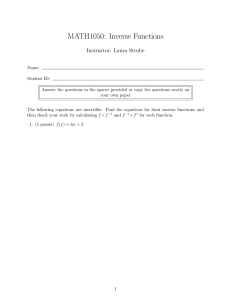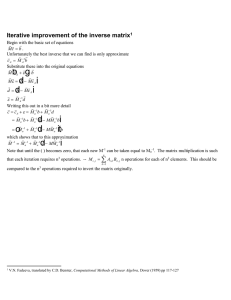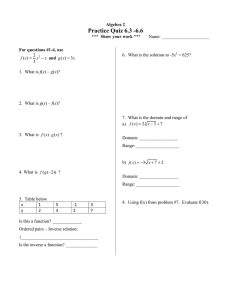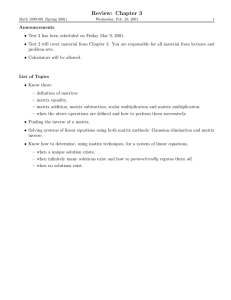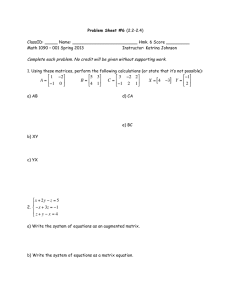5.6 Exponential and logarithmic equations
advertisement
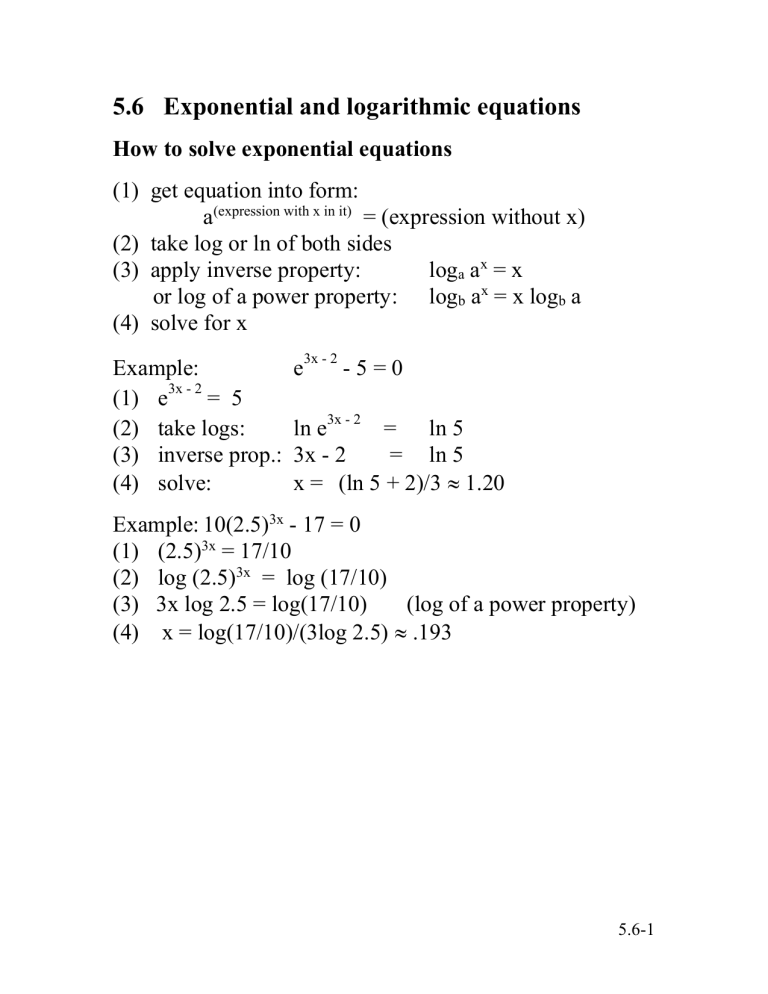
5.6 Exponential and logarithmic equations How to solve exponential equations (1) get equation into form: a(expression with x in it) = (expression without x) (2) take log or ln of both sides (3) apply inverse property: loga ax = x or log of a power property: logb ax = x logb a (4) solve for x Example: 3x - 2 (1) e = 5 (2) take logs: (3) inverse prop.: (4) solve: e 3x - 2 -5=0 3x - 2 ln e = ln 5 3x - 2 = ln 5 x = (ln 5 + 2)/3 1.20 Example: 10(2.5)3x - 17 = 0 (1) (2.5)3x = 17/10 (2) log (2.5)3x = log (17/10) (3) 3x log 2.5 = log(17/10) (log of a power property) (4) x = log(17/10)/(3log 2.5) .193 5.6-1 How to solve logarithmic equations (1) isolate all the logs on left side, everything else on right (2) write left-hand side as the log of a single expression (collect) to get into form: log (expression involving x) = expression with no x (3) exponentiate both sides (raise base to powers of sides) (4) use inverse property: a log a x x (5) solve for x (6) check –– there may be extraneous roots! Example: ln (x + 3) + ln x - 1 = 0 (1) ln (x + 3) + ln x = 1 (2) ln (x + 3)x = 1 (3) eln(x + 3)x = e1 (4) (x + 3)x = e (isolate) (collect) (exponentiate) (inverse rule) (5) solve quadratic equation x2 + 3x - e = 0 3 9 4e to get: = .729, -3.729 2 solution with (-) choice of is -, so is extraneous (why?) (6) ANS: .729 5.6-2 Applications Recall the formula for compound interest r A = P 1 n nt Remember Hillary Hoghugger? Her situation: She has $10,000 to invest in Arkansas razorback pig futures that is projected to accumulate earnings at 20% per year compounded quarterly. Her question: How long will it take to double my investment? Everything but t is known. 20000 = 10000(1.05)4t find t (1.05)4t = 2 log (1.05)4t = log 2 4t log (1.05) = log 2 log 2 t= = .30103 = 3.55 .0848 4 log 1.05 Answer: 3.55 years Mathematically: Problem: Solution: It’s even easier if compounding is continuous: A = Pert 20000 = 10000e.20t e.20t = 2 .20t = ln 2 t = (ln 2)/.2 = 3.47 years 5.6-3
